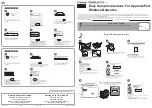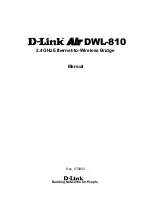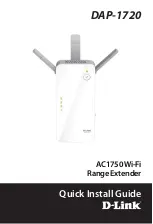
18
OPERATION
DETERMINING DEPTH OF CUT
See Figure 19.
As previously mentioned, the depth of cut is important
because it affects the rate of feed that, in turn, affects the
quality of the cut (and, also, the possibility of damage to
your router motor and bit). A deep cut requires a slower
feed than a shallow one, and a too deep cut will cause
you to slow the feed so much that the bit is no longer
cutting, it is scraping, instead.
Making a deep cut is never advisable. The smaller bits —
especially those only 1/16 inch (1.6 mm) in diameter —
are easily broken off when subjected to too much side
thrust. A large enough bit may not be broken, but if the
cut is too deep a rough cut will result — and it may be
very difficult to guide and control the bit as desired. For
these reasons, we recommend that you do not exceed
1/8 in. depth of cut in a single pass, regardless of the
bit size or the softness or condition of the workpiece.
To make deeper cuts it is therefore necessary to make as
many successive passes as required, lowering the bit 1/8
in. for each new pass. In order to save time, do all the
cutting necessary at one depth setting, before lowering
the bit for the next pass. This will also assure a uniform
depth when the final pass is completed.
WIDTH
OF CUT
DEPTH
OF CUT
1ST.
PASS
2ND.
PASS
1ST.
PASS
2ND.
PASS
Fig. 19
ROUTING
Your router is a versatile tool and can be used for many
different applications. You may rout grooves, carve
designs using a template, carve designs by freehand,
taper table and chair legs, mortise door jambs, or create
joints.
ROUTING GROOVES
See Figure 20.
When routing across the face of boards, set router at
desired depth of cut, place the edge of router base
against workpiece, and turn on the router. Slowly feed
the cutter into the workpiece along desired line of cut.
WARNING:
If desired depth of cut is greater than can be safely cut in
one pass, make cuts in two or more passes.
When routing straight cuts across stock, clamp a straight
edge to the workpiece to use as a guide. Position the
straightedge parallel to the line of cut and offset the
distance between the cutting edge of the cutter and the
edge of the router base. Hold the router base against the
straightedge and rout the groove.
Fig. 20
ROUTER FEED
DIRECTION







































